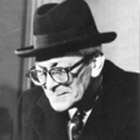|
Question:
WAS ANGLETON RIGHT?
What does it say about the state of US intelligence
in the late nineteen-eighties and early ninety-nineties
that two top counterintellgence officials-- Aldrich
Ames in the CIA's anti-Soviet counterintelligence and
Robert Phillip Hanssen in the FBI Soviet counterintelligence--
were moles for the Russian Intelligence Service? Under
such circumstances, who controlled the recruitments
the CIA and FBI were making during this period?
ANSWER:
James Jesus Angleton, the chief of the CIA's counterintelligence
staff from in 1953 to 1974, principal concern was not
with "moles" per se, but with the inherent
vulnerability of intelligence services to systematic
deception. To him, "moles" were a means to
this end if, and only if, they were in a position to
provide timely feedback to an adversary about what channels
his intelligence service were monitoring and how it
is was interpreting the data it was intercepting. With
such a feedback loop in place, he believed perfect deception
was possible. Imagine, he suggested, a wife, attempting
to deceiving her husband and using his psychiatrist
as her feedback source. By bribing the psychiatrist
to tell her on an ongoing basis how her husband was
interpreting her lies and deceptions, she would be able
to modify them, elaborating on those stories which he
believed and discarding or altering those stories which
he doubted. Through this trial and error process, she
could continue to fit her deception perfectly to what
her husband believed. "The deceived becomes his
own deceiver" in Angleton's example. (You might
recall Woody Allen used such a similar device to seduce
Julia Roberts in the movie Everyone Says I Love You)
While manipulating a suspicious spouse might require
only a bribed shrink, manipulating an entire intelligence
service would require a feedback source capable of getting
access to secret information that is both compartmentalized
and restricted on a "need to know" basis.
Angleton held that a penetration able to accomplish
this feat would most probably located in the counterintelligence
branch, which through its investigative function can
access to multiple compartments. Even so, the access
of a single mole would be limited by what cases he had
been assigned. What would greatly expand the feedback
would be two moles, each located in a different counterintelligence
branch, for example, CIA counterintelligence and FBI
counterintelligence. Such a combination, if efficiently
managed, could cosmically expand their access, since
each could produce leads for the other to investigate---
leads which would generate a legitimate need to know
for each mole. For example, if such a combo existed,
Mole A in CIA could inform the FBI through the CIA-FBI
liaison that there was suspicion about X. The FBI, charged
with investigating all espionage in the US, which turn
the case over to its counterintelligence branch, which
would give Mole B the access and need to know to delve
into the concerning X. Angleton feared that such a dual
penetration would allow the KGB to effectively control
the assessment of American intelligence Others, including
J. Edgar Hoover in the FBI and William Colby in the
CIA, did not share Angleton's concern. Hoover threatened
to sever its cooperation with Angleton~s staff and Colby
characterized the likelihood of the Russian intelligence
service recruiting moles simultaneously in both the
CIA and FBI counterintelligence as preposterous and
Angleton as paranoid. Angleton was fired.
Yet, the dual recruitment Angleton feared is precisely
happened in the nineteen-eighties when both Aldrich
Ames, heading the CIA's anti-Soviet counterintelligence,
and Robert Phillip Hanssen, working in the FBI Soviet
counterintelligence, both operated as moles for the
Russian Intelligence Service.
|


